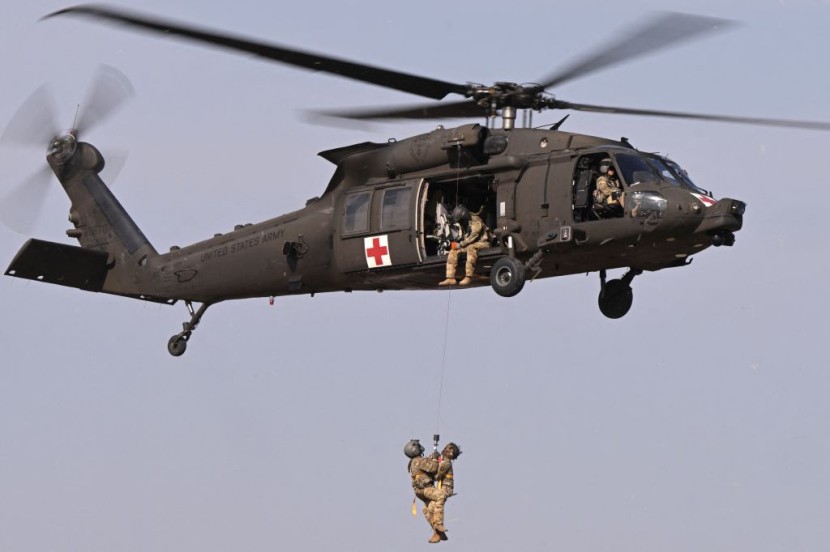
An initial flight of an AI-controlled UH-60 Blackhawk that flew a simulated medical mission as far as 134 kilometers. This time, the military-spec helicopter was a remotely piloted that flew quickly and low from the ground.
Unpiloted Black Hawk Helicopter
The mission consists of testing an autonomous version of the UH-60, the latest iteration of the venerable US general-purpose helicopter, reported NewScientist.
Other features include changing flight paths to pick up a mannequin as a demonstration and hooking cargo weighing a metric ton under it. The flight tests were completed in October.
Igor Cherepinsky at Sikorsky Innovations commented that the robotic system functions; Sikorsky is the company that makes the renowned Blackhawk. According to what he said during a press conference, inputting the mission parameters causes it to happen without establishing a data link. The AI then handles all the details just like a regular person.
This is the most recent achievement in the ALIAS program, operated by the US Defense Advanced Research Projects Agency, and it will be assessing Sikorsky's MATRIX innovation. Designed as a drop-in kit that allows rotorcraft to operate on their own, the very first flights were short jumps last February with no people onboard.
Stacie Pettyjohn, a national security think tank in Washington, D.C., said that eight miles was a good start, at the Center for New American Security. She also added that it is a step forward than keeping a pilot during trials.
Next-Generation, AI-controlled Helicopters
Recently, the army held exercises with the AI-controlled Black Hawk helicopter that loaded 500 pounds of simulated and real blood on board on a simulated medical mission.
The helicopter was up to 200 feet in the air and hitting air speeds of 185 kilometers per hour while flying low and fast between mountainous terrain that avoided crashing by linked sensors to keep the right height and speed, not colliding on course.
"It's like a self-driving car but flying, with the use of lidar and cameras," commented Cherepinsky, noted Head Topics.
In a different flight test, the helicopter took off while hauling a metric ton of cargo on a 12-meter (40-foot) sling and flew toward a predefined ground.
Sikorsky had a remote operator use a touchscreen tablet to control the machine remotely during a demonstration while the unit was carrying out the test. It had to act out picking up a wounded soldier after dropping the load from the sling.
Unpiloted Helicopters Good for Routine Missions
The AI-equipped UH-60 has shown that it is not problematic to add AI control to military hardware that houses weapons, despite what some people claim.
Some say there is a danger with automatons in aircraft or those without weapons who might end up causing damage or injury to those on the ground if anything really goes awry, says Pettyjohn.
Conceivably, logistics support runs can be conducted by UAV versions of these helicopters and other combat aircraft without putting the lives of human pilots in peril.
But even so, the MATRIX kit update might even allow airplanes to remain operational by themselves during less dangerous missions while their human crew members are taking a rest. He continues by saying that they work better on routine missions as well as less extreme ones.
Following the AI-controlled trend in the military, the Black Hawk helicopter is equipped with one, as part of a medical mission testing how it handles.
© 2026 HNGN, All rights reserved. Do not reproduce without permission.








